Brazil Dam Burst One Year Later
Spreading below lush mountains, this valley is rich in mineral wealth, including veins of gold and one of the largest iron ore deposits in the planet, discoveries that turned the area into Brazil’s mining country and the birthplace of one of the world’s top producers of minerals.
But to some residents, the industry turned on them a year ago when a dam holding back a giant pond of mine waste broke open, unleashing a tsunami of mud that killed 19 people, buried entire towns and polluted hundreds of miles of rivers, streams and forest land. The 1,200 people made homeless when nearly 500 houses, clinics, schools and bridges were wrecked still live in temporary housing waiting to be moved back to new settlements.
Paracatu looks ransacked. The entire village is brushed the color of clay. A church has a brown tidemark halfway up its towers. Desks on the second story of an elementary school are buried in mud. Barbie dolls, stuffed animals and comic books are scattered all over as if a tornado had just raged through.
Text by Adriana Gomez Licon /AP:
Full story
Read more
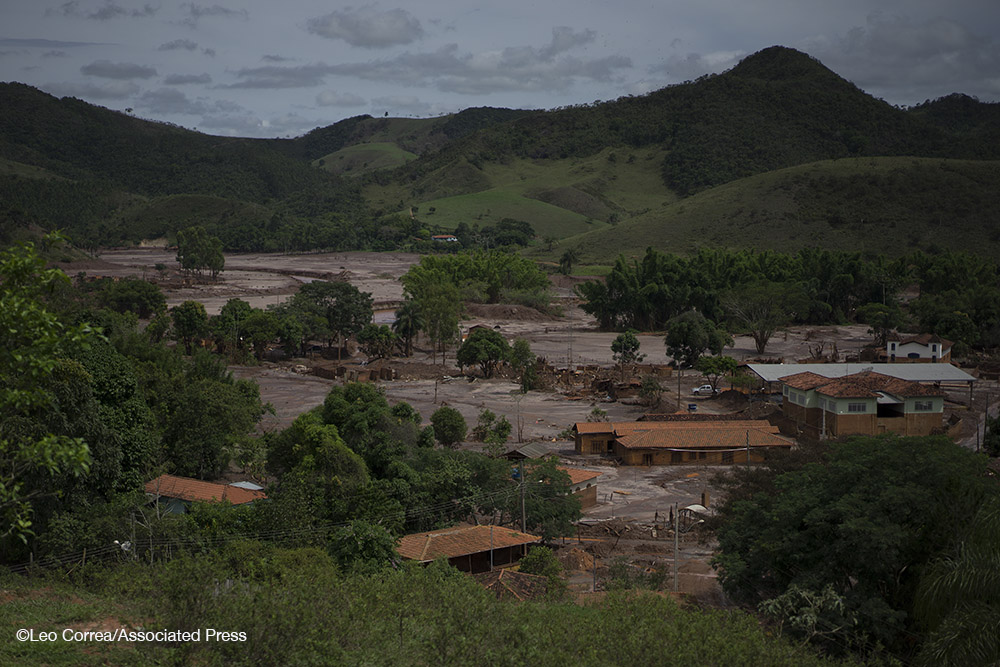
This Nov. 24, 2015 photo, shows the destruction of the hamlet of Paracatu, Brazil, caused by an early November mudslide, triggered by the failing of a dam at a nearby iron ore mine. Now the area is a mud-slathered no-go-zones where there are few reminders of the lives people built here. (AP Photo/Leo Correa)

In this Nov. 23, 2015 photo, a car sits precariously on top of the wall of a home, destroyed when the dam of an iron ore mine burst in early November, causing a mudslide, in Bento Rodrigues, Brazil. Thirteen people died in the tragedy, and another 11 remain missing. (AP Photo/Leo Correa)
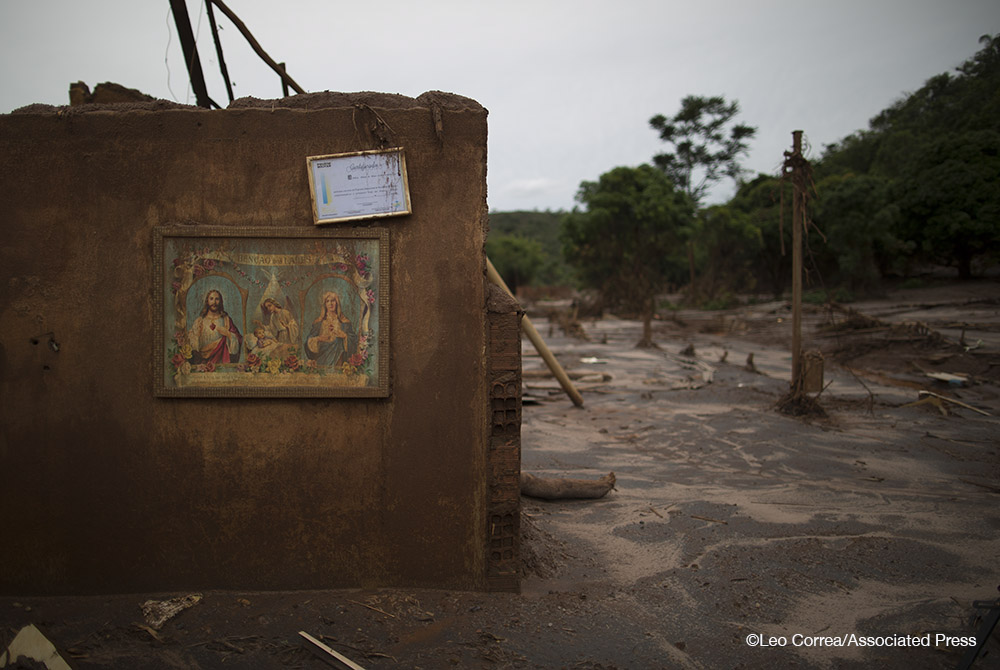
In this Nov. 24, 2015 photo, a framed military police certificate hangs above a framed image of Jesus Christ and Mary with a message that reads in Portuguese "Blessing of the homes," hang on the wall of a home destroyed by an early November mudslide, in Paracatu, Brazil. Then the dam at a nearby iron ore mine burst, it unleashed a tsunami of mud that swept away nearly everything in its path, flattening houses, uprooting trees and tossing cars asunder. (AP Photo/Leo Correa)

In this Nov. 24, 2015 photo, a doll lies embedded in a layer of mud in Paracatu, Brazil. Thirteen people died in the tragedy, and another 11 remain missing. (AP Photo/Leo Correa)
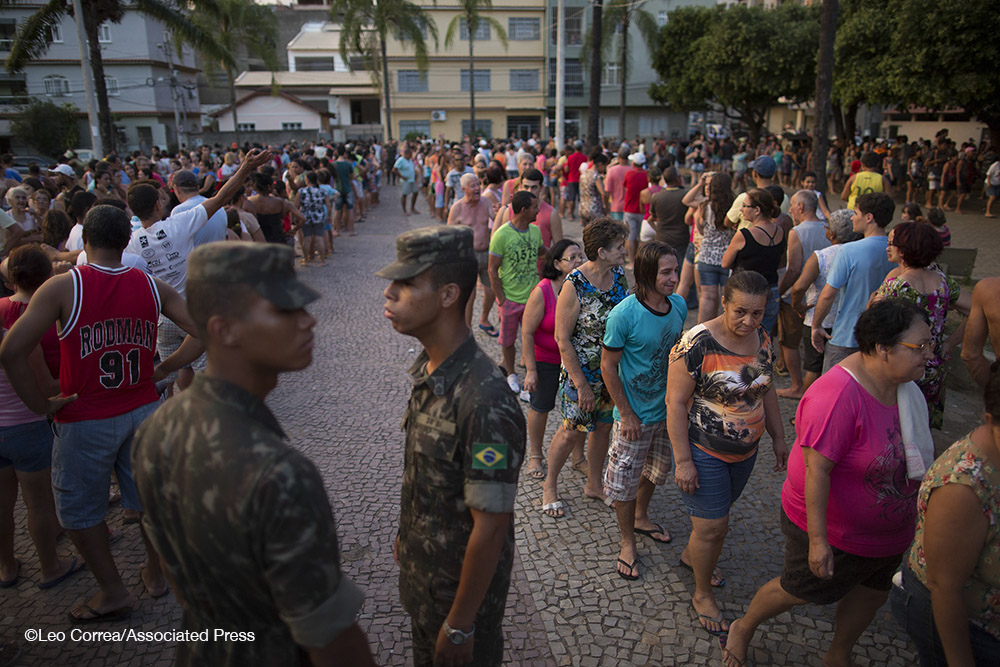
In this Nov. 21, 2015 photo, residents stand in line at a free water distribution site, weeks after a dam burst at the Samarco iron mine, causing mudslides and contaminated the area's drinkable water supplies, in Colatina, Brazil. The bottled water is provided by Samarco, which is jointly owned by mining giants Vale of Brazil and Australia’s BHP Billiton. (AP Photo/Leo Correa)
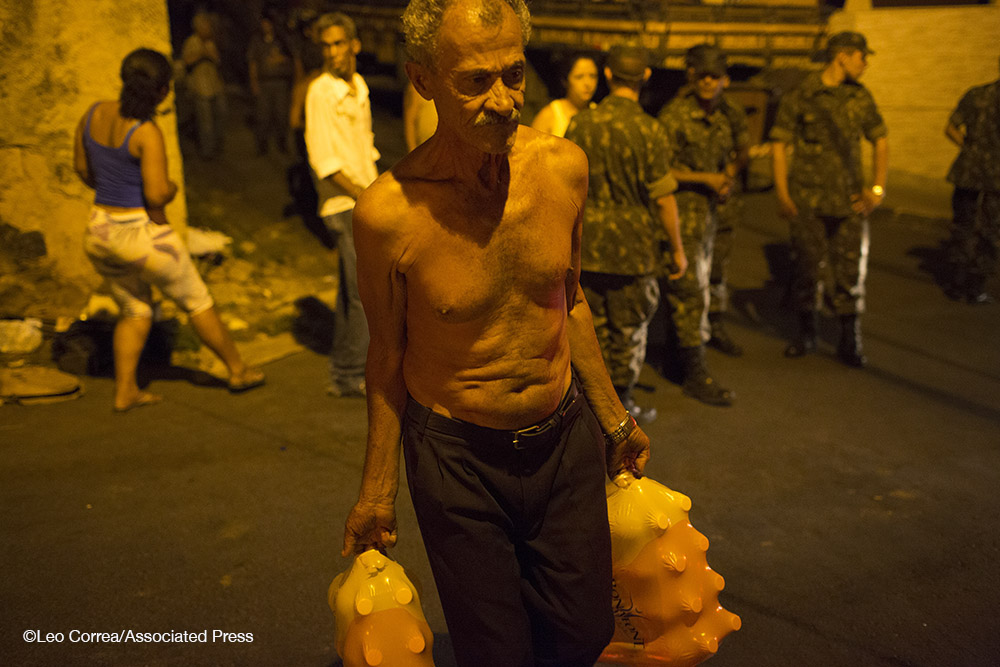
In this Nov. 21, 2015 photo, a man walks away with donated bottled water at a free distribution site, in Colatina, Brazil. The bottled water is provided by the company behind the iron ore mine disaster, Samarco, which is jointly owned by mining giants Vale of Brazil and Australia’s BHP Billiton. (AP Photo/Leo Correa)
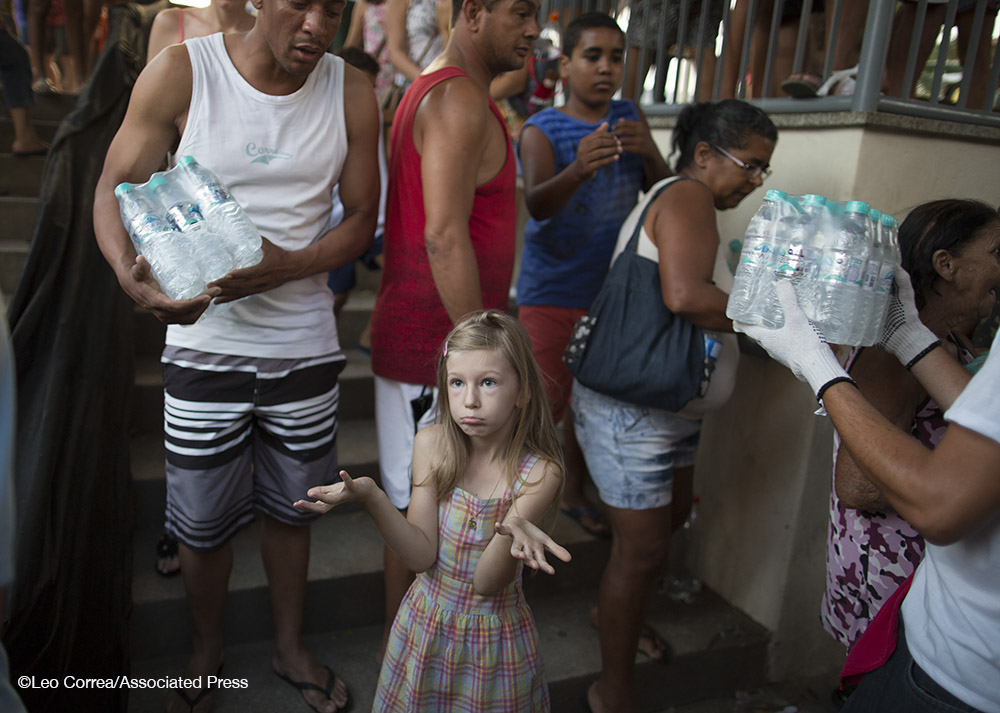
In this Nov. 21, 2015 photo, a girl questions why the man standing next to her was allowed to step ahead of her in a line for free water, at a distribution site, in Colatina, Brazil. Residents were queuing day and night for the bottles of water. (AP Photo/Leo Correa)
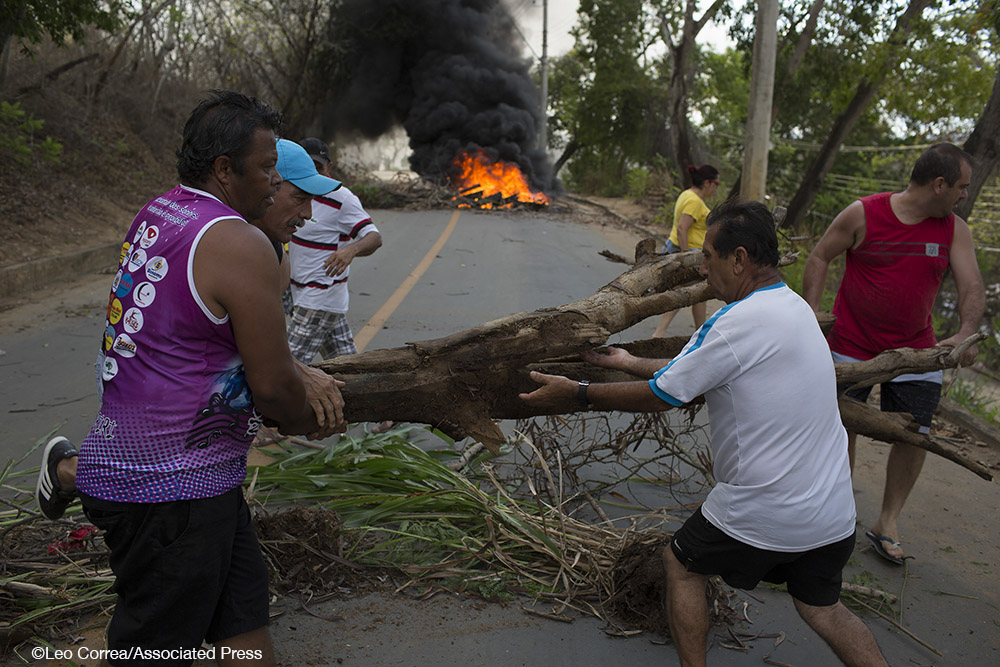
In this Nov. 21, 2015 photo, men place a large tree branch to use as a burning barricade while they protest for the lack of drinking water, in Colatina, Brazil. Nearly a month after a dam at a nearby Samarco iron mine burst, the effects of the disaster continue to ripple outward, affecting hundreds of thousands of people in two states, compromising the drinking water source for residents of cities in Minas Gerais and Espirito Santo states. (AP Photo/Leo Correa)
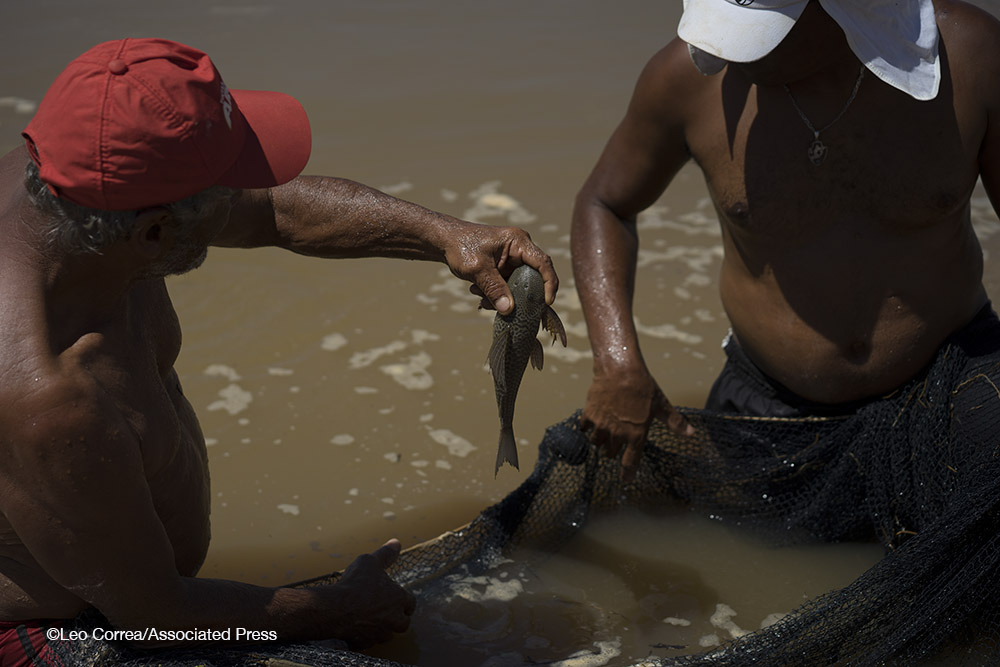
In this Nov. 21, 2015 photo, a fisherman holds a fish over a net in a temporary pool built to protect some of the creatures that inhabit the Doce River from polluted waters, in Colatina, Brazil. Even though the fishermen claim to have rescued at least 110 species from the polluted waters, nearly a month after the dam burst, the effects of the disaster at the Samarco iron ore mine continue to affect wildlife. (AP Photo/Leo Correa)
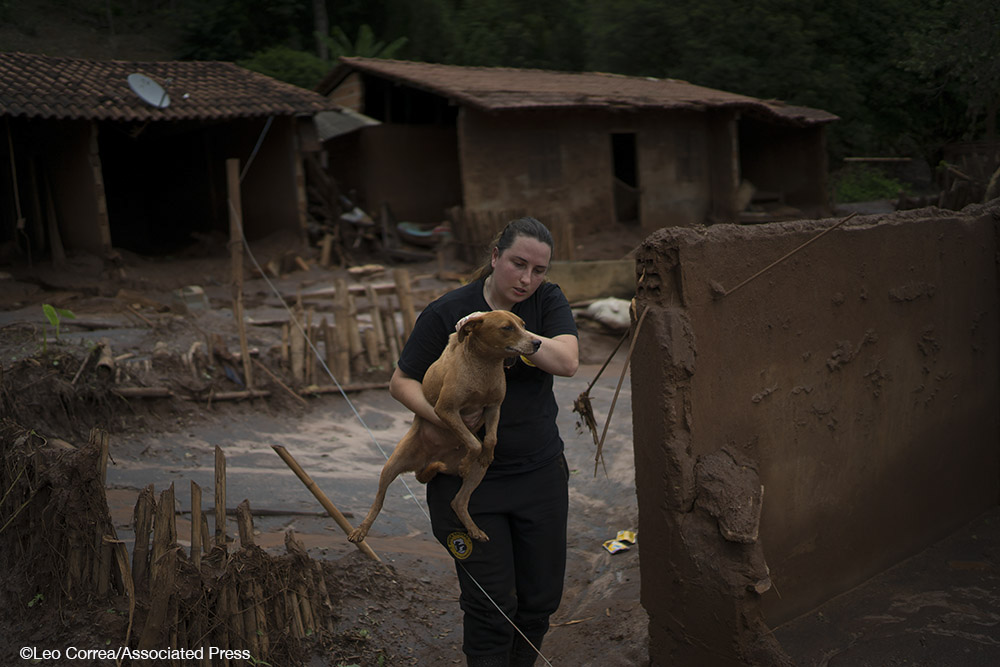
In this Nov. 24, 2015 photo, Danielle Savy, member of the animal protection group Forca Animal, rescues a dog, left behind in Paracatu, Brazil, a community devastated by an early November mudslide, triggered by a dam burst at a nearby mining company. Savy says she has rescued about 15 animals. Many pets were found dead she said because they had been leashed. (AP Photo/Leo Correa)
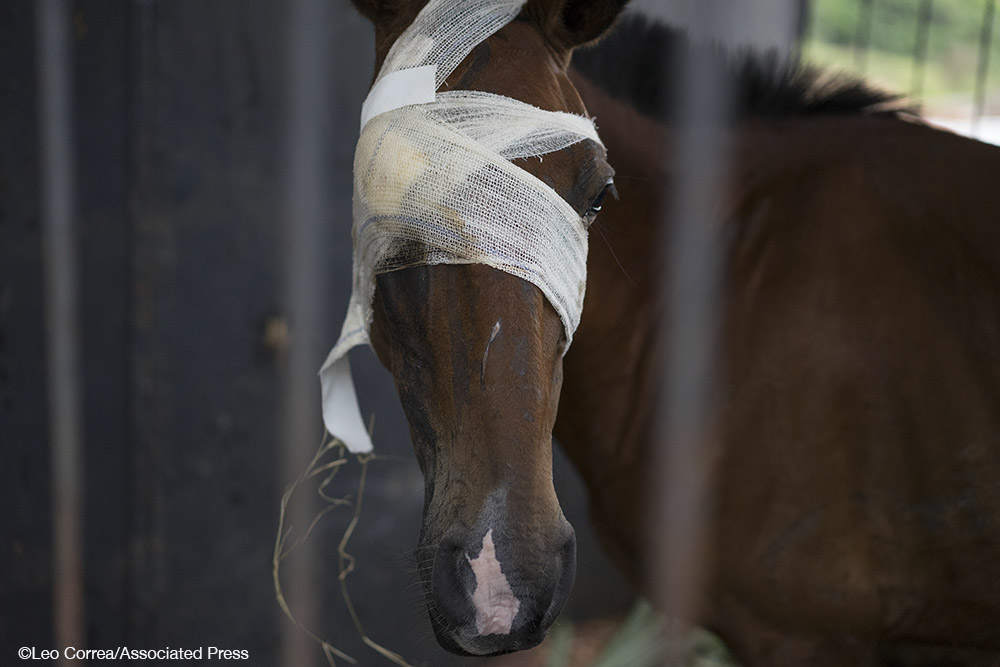
In this Nov. 24, 2015 photo, a wounded horse, rescued from an area devastated by a recent mudslide, stands in an improvised shelter in Mariana, Brazil. A flood of mud unleashed by the dam burst at the Samarco mine all but erased a nearby hamlet, injuring both man and beast. (AP Photo/Leo Correa)

In this Nov. 22, 2015 photo, Ererre, of the Krenak people, rows his boat in the now polluted Doce River, contaminated by a mix of residues from a dam that burst in early November, in Resplendor, Brazil. "Here we used to have a lot of fish that we liked. Now, our river is dead, our river is over. Our fish are dead, everything is dead." Errere said. (AP Photo/Leo Correa)
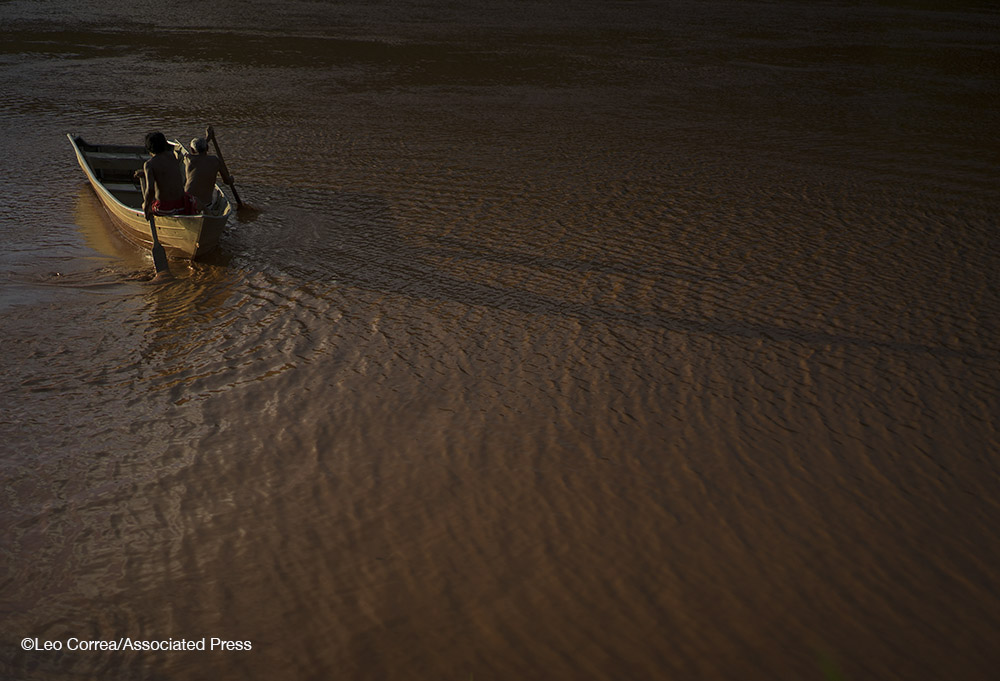
In this Nov. 22, 2015 photo, Ererre, left center, and Jose Cecilio Damasceno, both of the Krenak people, row their boat on the Doce River, polluted by a mix of residues from a dam that burst in early November, in Resplendor, Minas Gerais state, Brazil. The disaster threatens their traditional way of life as an indigenous people who live along the Doce River. (AP Photo/Leo Correa)
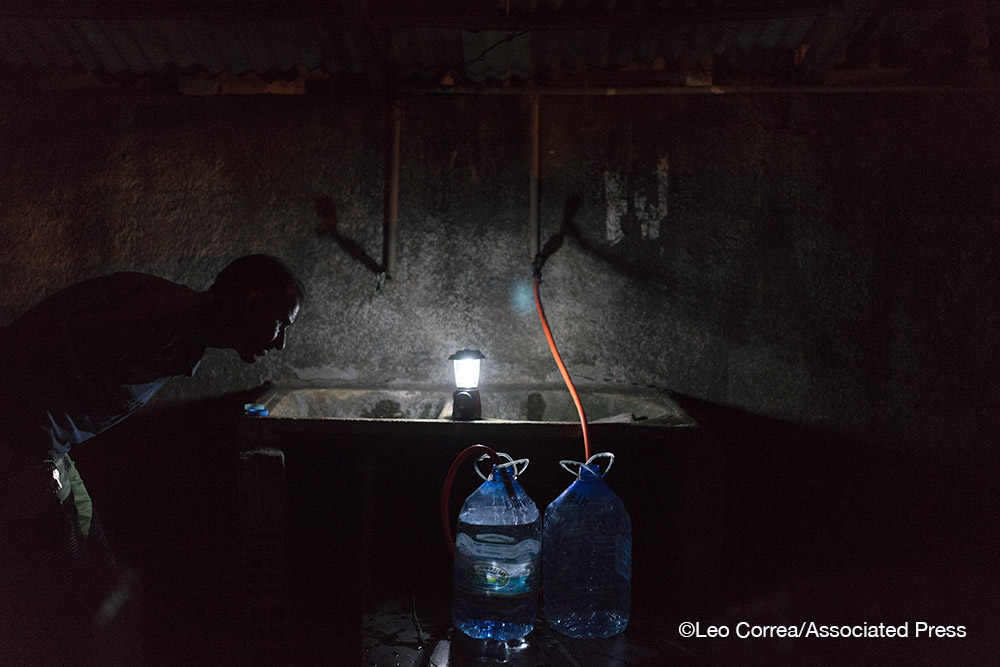
In this Oct. 10, 2016 photo, Samuel Alves de Andrade watches as he fills a container with water from the Sao Braz water pipe in, Colatina, Brazil. "Since the environmental disaster we starting collect this water. We don't know how this water is, but I believe it is better than the water from the (Doce) river." Nov. 5 will mark the one-year anniversary when a dam of mine waste broke open, polluting hundreds of miles of rivers, streams and forest land in the Doce River Valley. (AP Photo/Leo Correa)
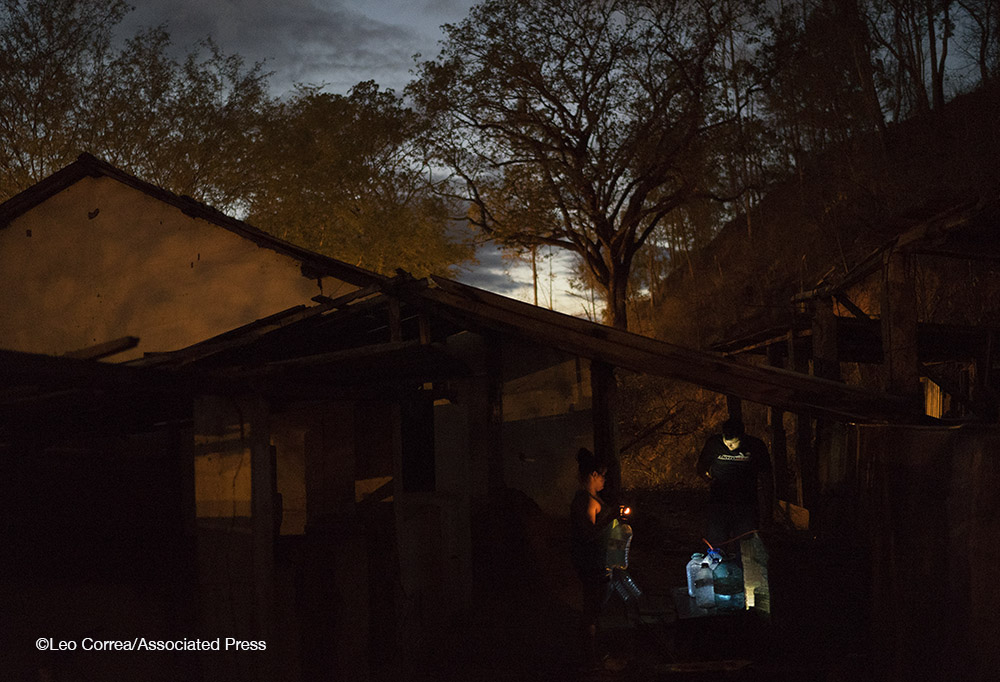
In this Oct. 10, 2016 photo, Warley Andres Bernardes waits with his wife Laila Cristina Rosa, to fill a container with well water, in Colatina, Brazil. Many people in the area won't drink or cook with water from their faucet at home because, unlike the groundwater, it's hooked to a network of reservoirs the Doce River feeds into. A year ago a dam of mine waste broke, sending metal-laden mud into the Doce. (AP Photo/Leo Correa)
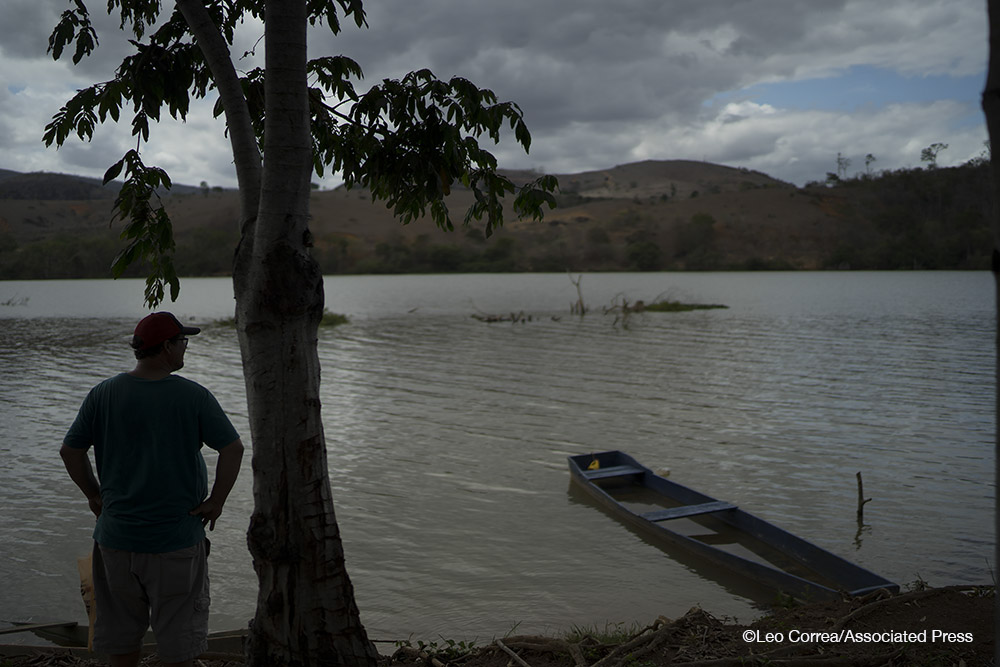
In this Oct. 11, 2016 photo, fisherman Deucimar Teixeira Lordes stands on the banks of the Doce River, in Mascarenhas, Brazil. The 45-year-old fisherman has doubts that he will fish in the Doce again. "Fishing here is not good anymore. I would not eat it and I don't have courage to sell it to the people." Lordes said. (AP Photo/Leo Correa)
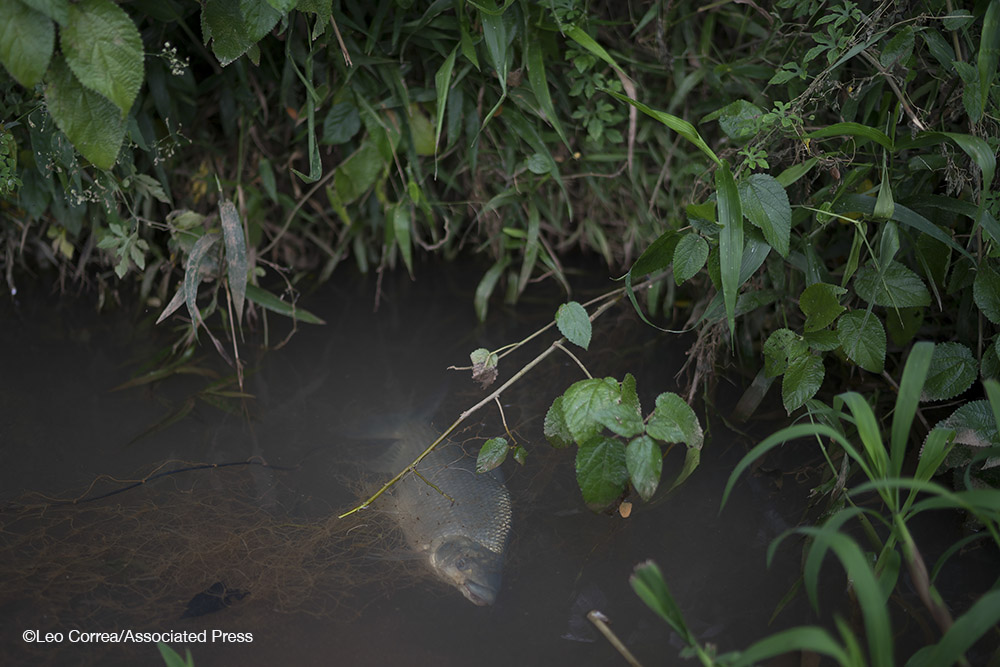
This Oct. 10, 2016 photo shows a fish trapped in an old fishing net left abandoned in the Doce River, in Colatina, Brazil. One year ago a dam burst at an iron ore mine, causing flooding and mudslides, engulfing towns and displacing thousands of people. The mud traveled through the Doce River, polluting, and affecting the cities dependent on the river. (AP Photo/Leo Correa)
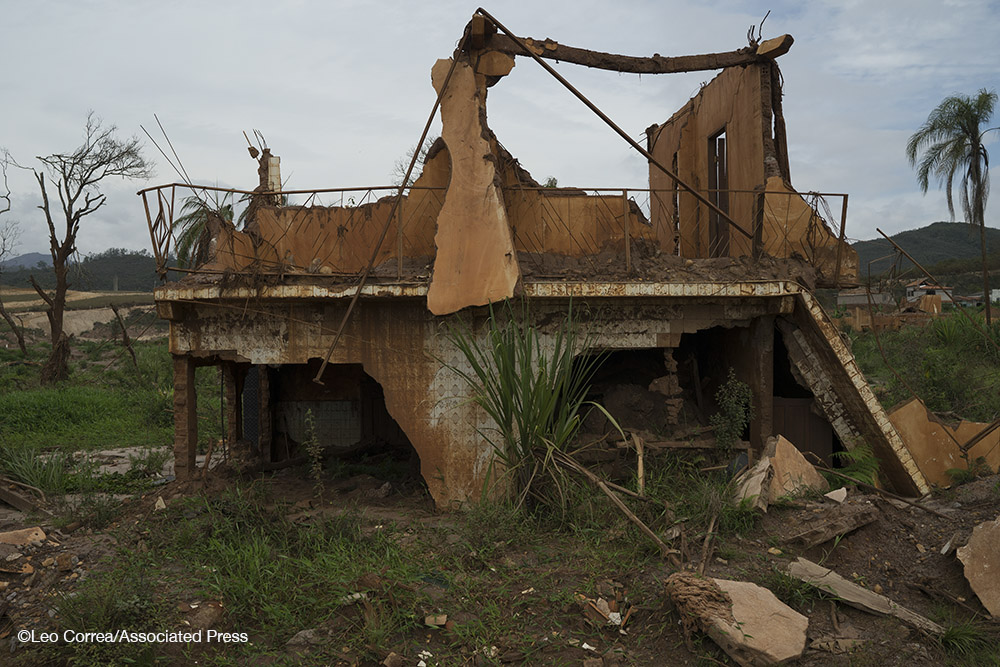
This Oct. 14, 2016 photo shows a home destroyed by a mudslide triggered by the Nov. 5, 2015 failing of a dam holding back a giant pond of mine waste, in Bento Rodrigues, Brazil. A year later the entire village is still brushed the color of clay. (AP Photo/Leo Correa)
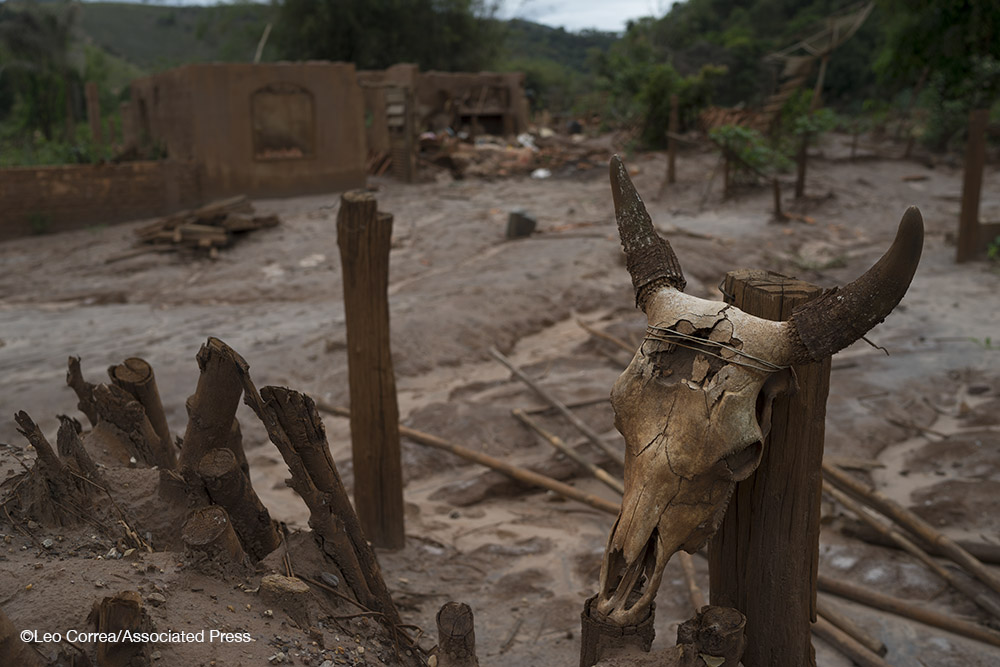
This Oct. 13, 2016 photo shows a cow skull wired to a fence post in front of a hamlet destroyed by a mudslide triggered by the Nov. 5, 2015 failing of a dam holding back a giant pond of mine waste, in Paracatu, Brazil. Most residents are still waiting for the company behind the tragedy, Samarco, to pay for their lost possessions and build new towns for them. (AP Photo/Leo Correa)
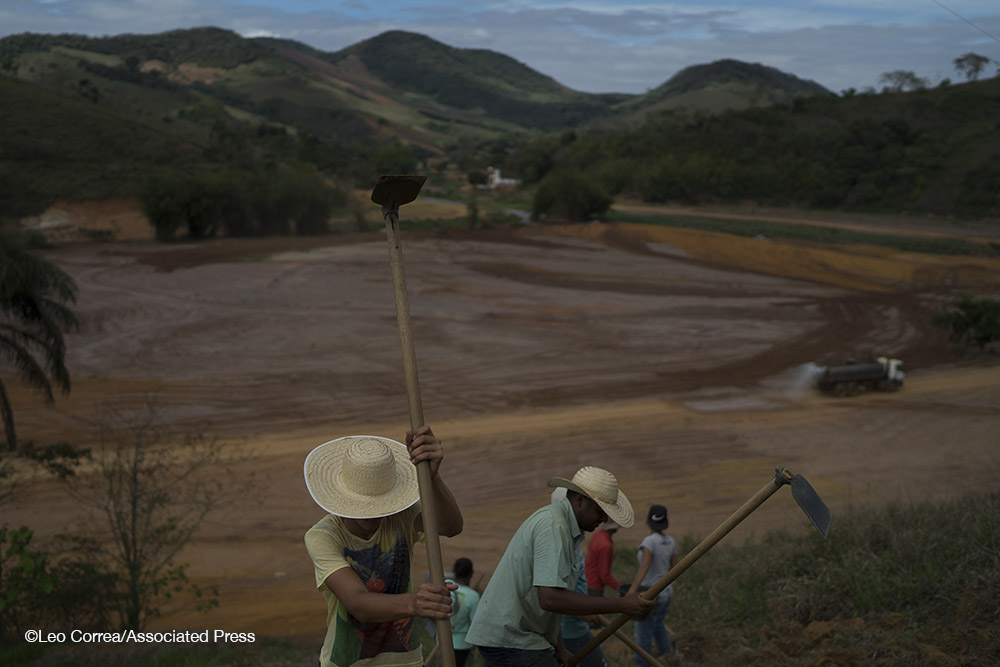
In this Oct. 13, 2016 photo, employees prepare a slope to prevent erosion that could be caused by the expected rain this time of the year along the Doce River, almost a year after a dam holding back a giant pond of mine waste broke open, in Gesteira, Brazil. Officials worry the rainy season may further eat away riverbanks by spreading the waste still in the basin. (AP Photo/Leo Correa)
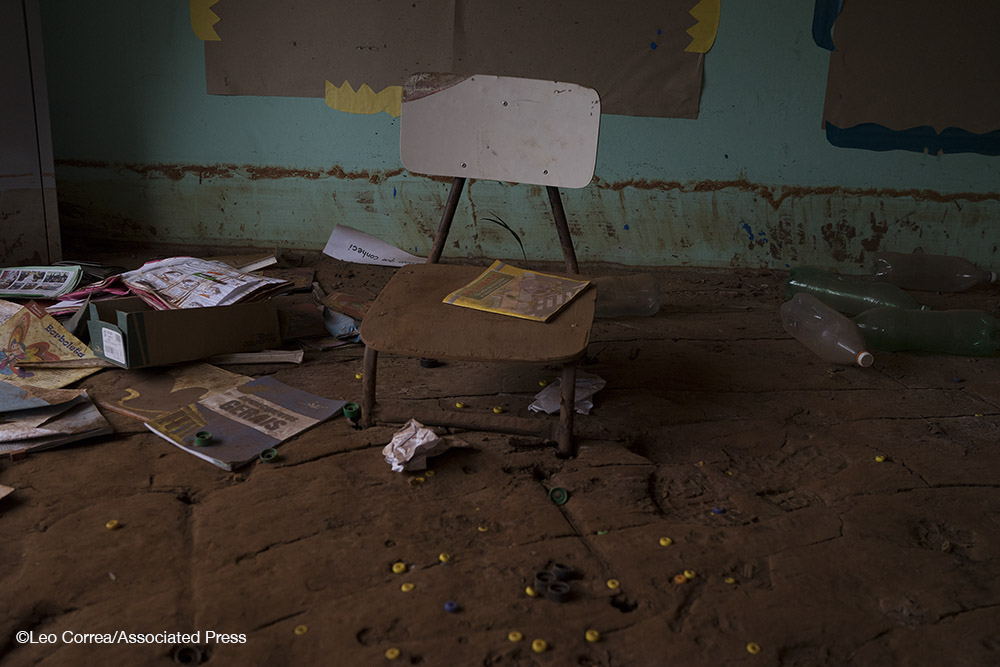
In this Oct. 13, 2016 photo, a chair is embedded in dried mud in the classroom of a school destroyed by a mudslide triggered by the Nov. 5, 2015 failing of a dam holding back a giant pond of mine waste, in Paracatu, Brazil. Families whose lives were upended by the tragedy, say they feel betrayed by the company behind it, Samarco, which is a joint venture of two of the world’s mining giants, Vale of Brazil and BHP Billiton of Australia. (AP Photo/Leo Correa)

This Oct. 13, 2016 photo shows a scrawled message in Portuguese that reads; "Samarco Assassin!" on a classroom wall at a school destroyed by a tsunami of mud, triggered on Nov. 5 2015, by the failing of a dam of a nearby iron mine, in Paracatu, Brazil. One year later, families whose lives were upended by the ravaging flood say they feel betrayed by the company behind it - Samarco, a joint venture of mining giants Vale of Brazil and BHP Billiton of Australia. (AP Photo/Leo Correa)
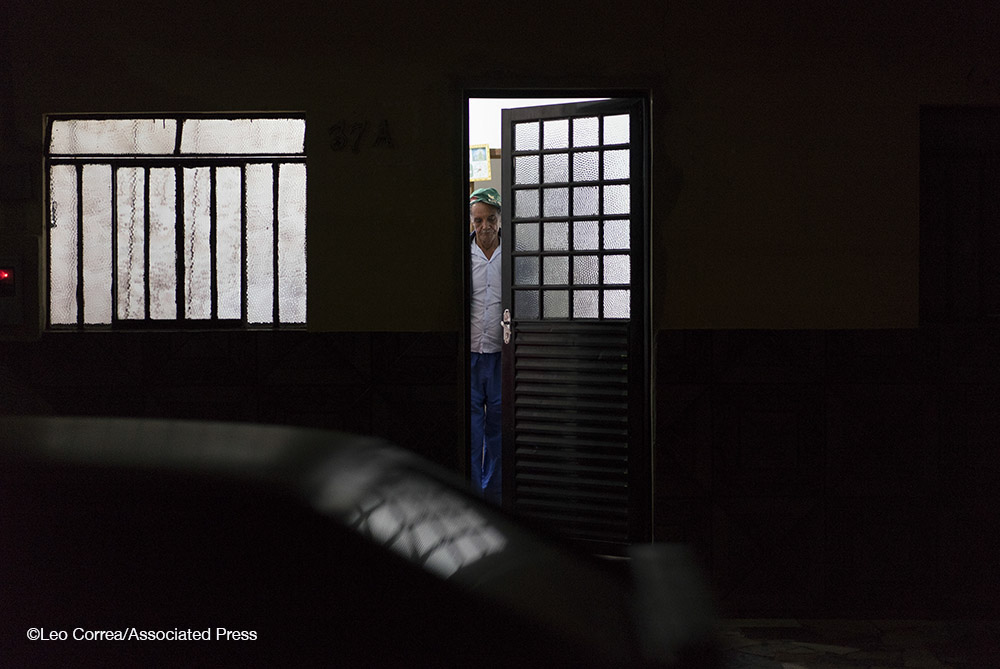
In this Oct. 13, 2016 photo, Jose do Patrocinio de Oliveira closes the front door to his apartment, in Mariana, Brazil. People who lost their homes in the villages wrecked by a Nov. 5, 2015 tsunami of mud are living all across the cobbled-stone city of Mariana, waiting to be relocated to new rural areas. Many say they feel like prisoners in their temporary city apartments. (AP Photo/Leo Correa)
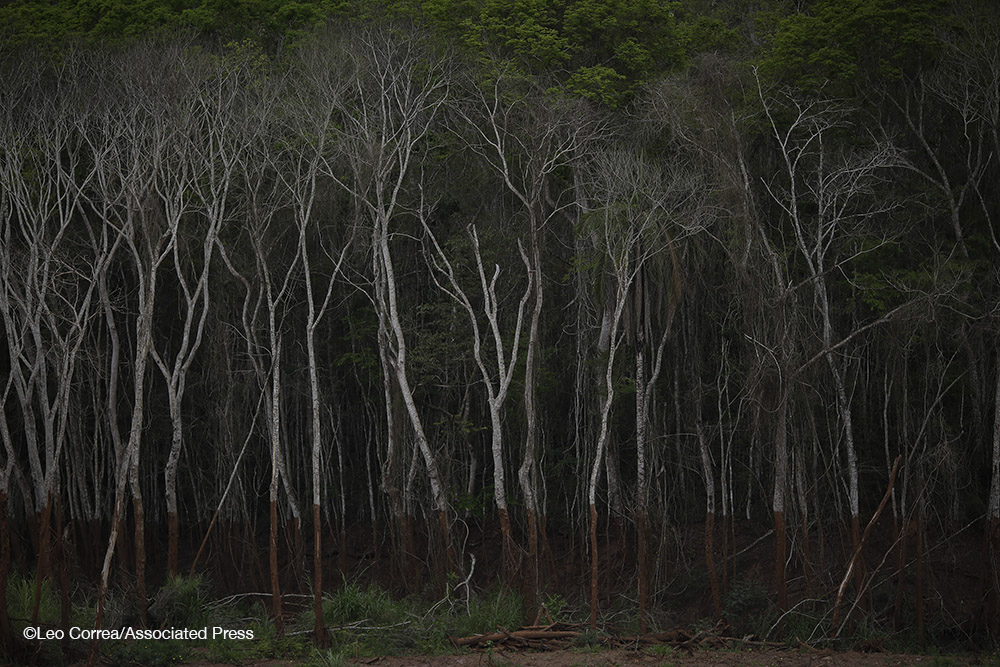
This Oct. 13, 2016 photo shows brown tidemarks halfway up the trunks of trees lining the banks of the Doce River, in Paracatu, Brazil. It has been almost a year after a dam holding back a giant pond of mine waste broke open, unleashing a tsunami of mud that killed 19 people, buried entire towns and polluted hundreds of miles of rivers, streams and forest land in Brazil's Doce River Valley. (AP Photo/Leo Correa)























